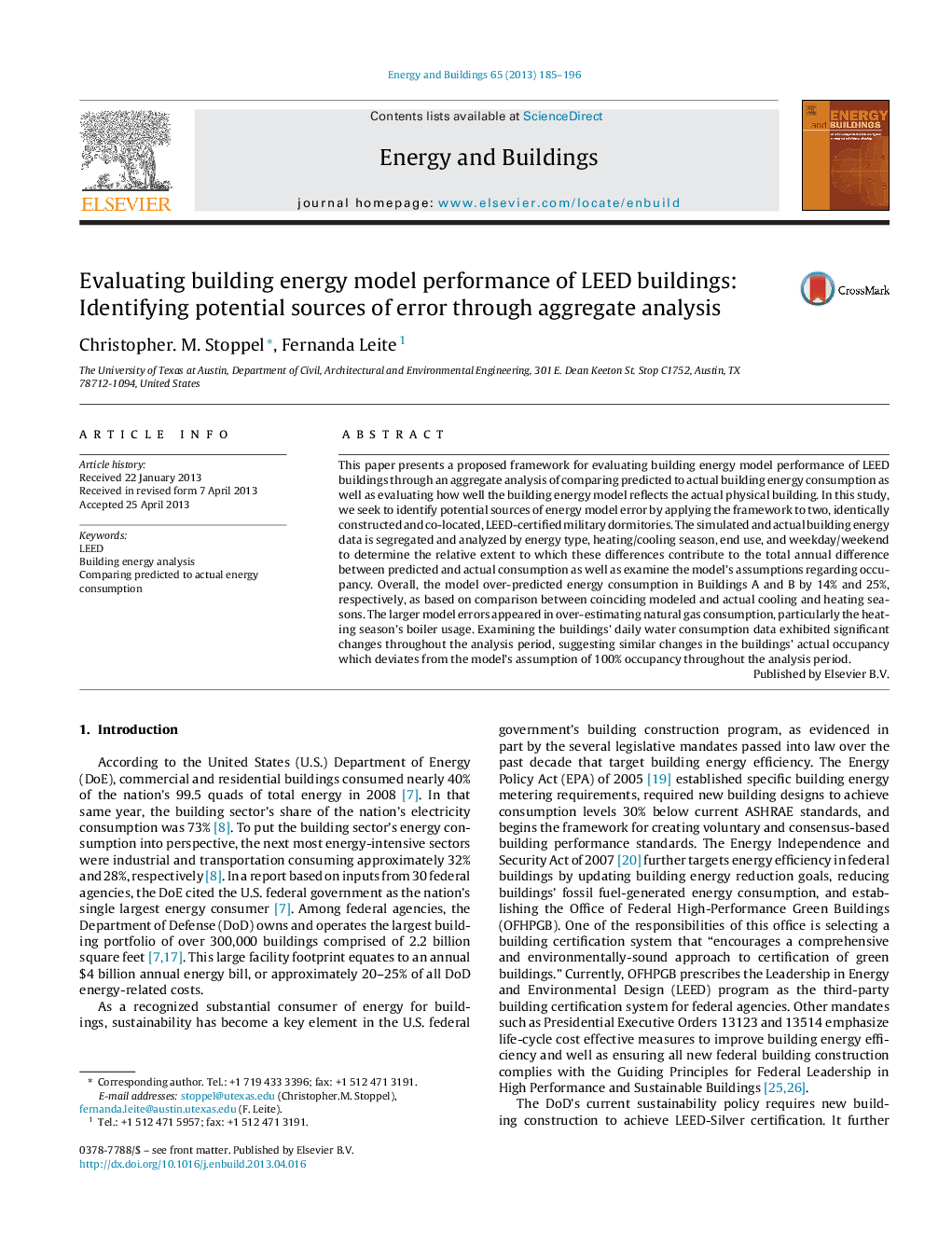| Article ID | Journal | Published Year | Pages | File Type |
|---|---|---|---|---|
| 263203 | Energy and Buildings | 2013 | 12 Pages |
•We proposed a framework for evaluating building energy model performance.•We applied the framework for two identical LEED dormitory buildings.•The energy model over-predicted actual energy consumption in both buildings.•The energy model correctly predicted higher electricity usage during weekends.•Actual building occupancy deviated significantly from the model's assumptions.
This paper presents a proposed framework for evaluating building energy model performance of LEED buildings through an aggregate analysis of comparing predicted to actual building energy consumption as well as evaluating how well the building energy model reflects the actual physical building. In this study, we seek to identify potential sources of energy model error by applying the framework to two, identically constructed and co-located, LEED-certified military dormitories. The simulated and actual building energy data is segregated and analyzed by energy type, heating/cooling season, end use, and weekday/weekend to determine the relative extent to which these differences contribute to the total annual difference between predicted and actual consumption as well as examine the model's assumptions regarding occupancy. Overall, the model over-predicted energy consumption in Buildings A and B by 14% and 25%, respectively, as based on comparison between coinciding modeled and actual cooling and heating seasons. The larger model errors appeared in over-estimating natural gas consumption, particularly the heating season's boiler usage. Examining the buildings’ daily water consumption data exhibited significant changes throughout the analysis period, suggesting similar changes in the buildings’ actual occupancy which deviates from the model's assumption of 100% occupancy throughout the analysis period.
